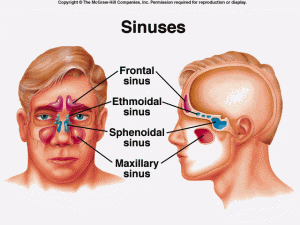Well, today’s post is a bit off the usual ENT related topics, but it’s good to mix things up from time to time, right? I’d like to talk about Bikram yoga, which is something that I’ve been doing regularly for about the past year.
Bikram yoga is a standardized 90 minute long series of 26 postures and 2 breathing exercises that is done in a hot room (105 degrees, 40% humidity) with an instructor leading the class. The first half of the Bikram series is done standing up, and the second half lying or sitting on the floor. Throughout the class, the instructor is talking the large majority of the time giving you a somewhat standardized monologue of instructions on the postures. (Each instructor adds their own twist, but you’ll hear a lot of the same lines every class).
A guide to the postures is HERE.
The workout is intense, and you’ll sweat a ton and burn a lot of calories. Although it’s claimed to be a “full body workout,” I find that the main strength benefit is to my legs, back, and abdominal muscles. Physically, my flexibility and balance have also improved substantially since starting Bikram.
Perhaps an even greater benefit is mental health. The most important part of Bikram yoga is keeping your mind clear and focused on your body and the instructor’s words. In class, my mind does wander sometimes, but most of the time it is relaxed and focused on the present moment. Afterwards, I feel a tremendous calm and clarity of mind, and I can easily say that Bikram yoga is the only exercise I’ve ever done where I feel more energized afterward.
Proponents of Bikram yoga make a lot of claims about it being able to reverse injuries and other health benefits. I cannot make any claims other than what I’ve noticed in myself. Fortunately, I have avoided any major injuries in my life and I’ve generally been in very good health. I do feel that my health is better since starting Bikram yoga, though. I have more energy and core strength, and I just feel good!
The studio where I practice, Pure Bikram Austin has created a nonprofit organization (Pure Action) that funds medical and scientific research of the benefits of Bikram yoga so we may find out more proven benefits in the future.
So, what should you do to start? First, before starting any exercise program, it is safest to consult with your primary care doctor. The staff at your local Bikram studio can also be helpful- if you have it, they’ve probably seen it before. I’ve seen people of all ages (age about 10 to at least 70), shapes, and sizes in Bikram class. No one is going to judge you- the instructors and other students are some of the nicest and most supportive people I’ve met anywhere.
Before class, it is important to optimize your hydration and avoid eating for at least 3 hours before entering the hot room. Optimizing hydration means more than just drinking a lot of water, it also means getting enough electrolytes in your system. So, drink a Gatorade, coconut water, or another high-electrolyte drink in addition to water before class. I personally drink 1 liter of water mixed with a packet of Electromix 2-3 hours before class and I’ve never had any problems with cramping or other signs of depleted electrolytes. I drink water with all my meals as well. Also, try to eat healthy the day of Bikram class. I’ve gone a couple times after eating a greasy lunch and it was not pleasant…
During class, you’ll need a yoga mat, a towel to put over it, and a bottle of water. My studio offers mat and towel rentals, and I would guess most others do as well. For your first few classes, your only goal should be to stay in the room for the whole 90 minutes. If you find yourself getting out of breath or lightheaded, stop and rest for as long as you need to. It is fine to sit and watch! After a couple of classes, you’ll get used to the heat and things will come a lot easier.
After class, congratulate yourself on coming out and doing your best. I would suggest taking a quick rinse-off shower and changing clothes before getting in your car. Otherwise your car will start smelling very bad very quickly. You can take a longer shower once you get home. Make sure to drink more water and electrolytes after class to minimize muscle cramping.
Give it a month of going regularly to decide if Bikram is for you. I’ve found that 2-3 classes a week is the best schedule for me. Some hardcore folks go every day, but that is too much of a time commitment for me and I also would get bored of the class if I went that much.
For more information:
Pure Bikram Yoga (4 Metro Austin locations)
Hill Country Hot Yoga (Wimberley and San Marcos locations)
Pure Action (researching the medical benefits of hot yoga)
